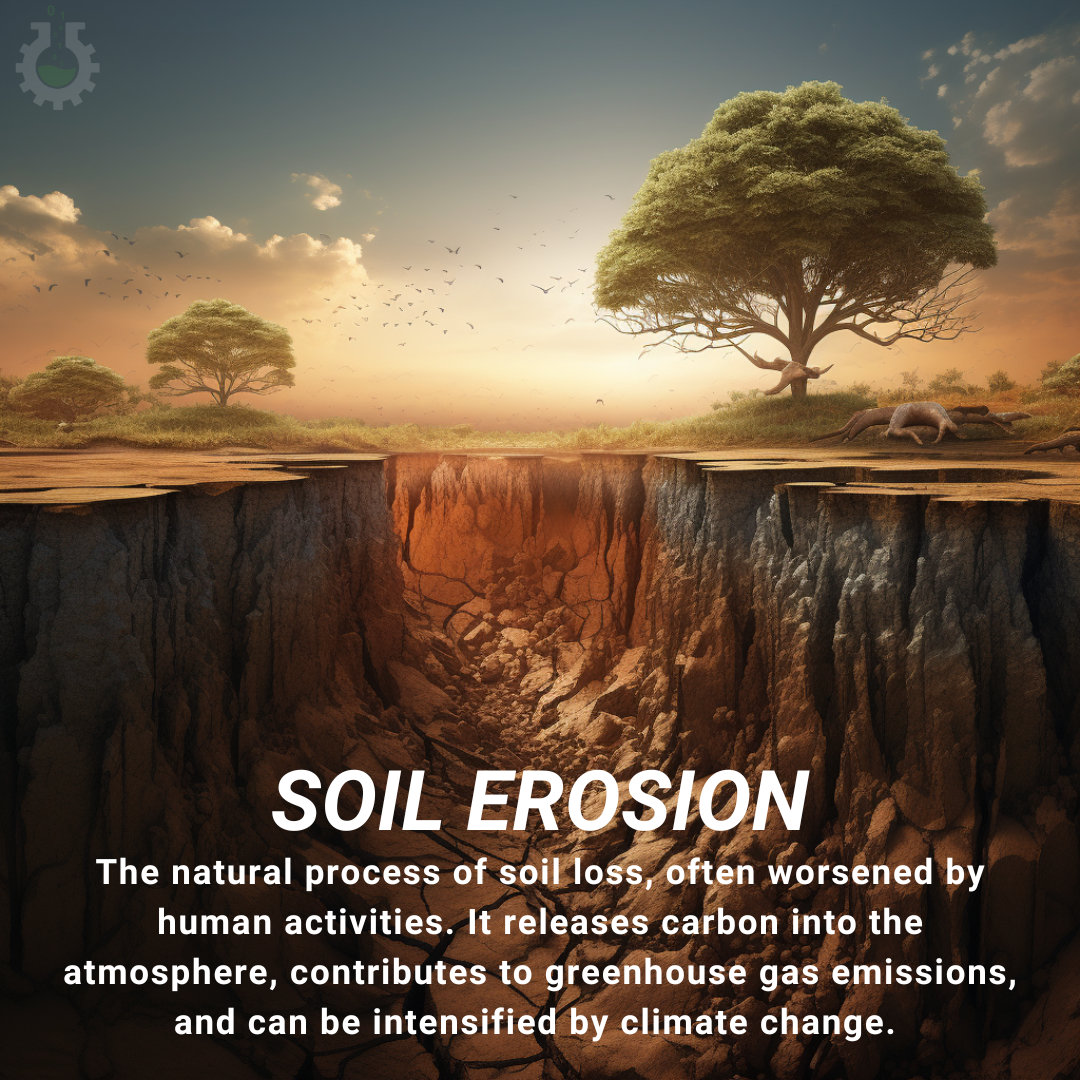September 15, 2023
Climate Change Poster Collection of the Day – Soil Erosion
Book a Demo
Today’s Climate Change Poster Collection highlights Soil erosion, refers to a natural process that results in the depletion of the top soil layer, commonly propelled by wind and water. This unwelcome phenomenon can be significantly expedited by human activities, such as agriculture and deforestation. When soil erosion occurs at an accelerated pace, it can lead to a host of environmental challenges, including loss of biodiversity, ecological collapse, and increased vulnerability to floods.
There are various types of soil erosion, each with their own unique characteristics and impacts. These include splash erosion, caused by the impact of falling raindrops; sheet erosion, which results in the removal of a uniform layer of soil; rill erosion, involving the formation of small channels in the soil; gully erosion, which creates larger, deeper channels; and tunnel erosion, the formation of underground tunnels due to concentrated water flow.
The consequences of soil erosion are far-reaching, impacting not only the environment but also agricultural productivity and the economy. This is particularly the case in nations where agriculture forms the backbone of the economy. Moreover, soil erosion contributes to human-made greenhouse gas emissions, exacerbating the challenge of climate change. It can also have an adverse effect on water quality by increasing sediment and pollutant levels.
Given these serious implications, it’s imperative to implement soil conservation efforts. Techniques such as crop rotation, the use of cover crops, the establishment of windbreaks, and the creation of buffer strips can significantly reduce soil erosion. Similarly, sustainable land management practices like contour farming, terracing, agroforestry, reforestation, and afforestation can not only prevent soil erosion but also enhance soil fertility, promoting healthier ecosystems and more productive agricultural lands.
In an interesting tangent related to natural materials and their properties, a study on amorphous Ge-Sb-Se thin films found that their optical bandgap, refractive index, and thermal stability are dependent on the film’s composition. While this may seem unrelated to soil erosion, it brings to focus the importance of understanding the properties and interactions of natural materials. This knowledge can provide valuable insights for future applications in diverse fields, including optoelectronics and photonics, and perhaps even in designing innovative solutions for soil conservation.
While soil erosion is a natural process, human activities can significantly accelerate it, leading to a multitude of environmental and economic challenges. Through the implementation of soil conservation efforts and sustainable land management practices, we can mitigate the negative impacts of soil erosion, protect our ecosystems, and ensure a sustainable future.
Discover an inspiring collection of climate change posters.



